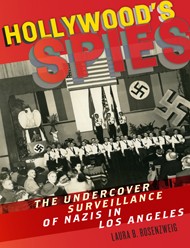Denmark was taken by surprise when Germany invaded the Scandinavian country to its north on Tuesday, April 9, 1940. To the Danes’ surprise, their government surrendered quietly, and ordered the population to go about their daily lives as if nothing had changed. But many could not tolerate the invasion. Outward defiance was fatal. In this densely researched book, Deborah Hopkinson tells stories and anecdotes of the individuals and groups that organized against the Nazi occupiers.
Thirty six chapters are divided into five parts — Occupation & the Sparks of Defiance, Crackdowns & Flight, Action & Arrest, Deported & Imprisoned, and Liberation. The book details the fear and contradictions of wartime Denmark. While there were numerous Danish collaborators — photos in the book show a Danish Nazi party ceremony — some were actually spies bent on sabotaging the Germans occupying the country.
The book tells of Danes who foiled Germans’ power and property. Especially memorable is the quiet defiance of Neils Skov who, in the middle of the night, punctured gas tanks of German vehicles with a single screwdriver and then lit the flammable liquid ablaze with a single match. The anecdote helps the reader feel the satisfaction Skov experienced watching the explosion as he quietly walked down the dark street and shines a light on the role of civil disobedience.
The book tells of many heroic, often violent acts and narrow escapes by Danes. Hopkinson explains how the resistance functioned with many miraculous acts, like one pair’s effort to fly to England to connect with the Allies. But there were also numerous misunderstandings and failures by the resistance, as most were amateurs with little training, only motivated by conviction that they had to stop the Nazis. Graphic scenes describe how Danes helped Jews escape capture from Germans by spiriting the persecuted group to Sweden. But most interestingly of all, most of the book does not focus on Jews but rather righteous Gentiles. Images of historical photographs help tell the complicated and dense story with numerous names, events, places and dates. The book gives a sense of the confusion and isolation of the time as well as the orderly, obedient and mostly homogenous Danish culture. Many more details are provided in the book including an epilogue as well as sections about the Danish language, a list of people in the book, a selected chronology, a map, bibliography, source notes, photo credits and index.
Highly recommended for ages 9 – 14.
Dina Weinstein is a Richmond, Virginia-based writer.





